Dishing up Australia's dining past: How food has shaped us through the decades

From cheese fondue to pho, a new television show, Back In Time For Dinner, relives our radically changing tastes, writes Annabel Crabb.
We learn about history from big things. Elections, recessions, disasters, victories, scandals; they lend their names to eras and gradually we quiet our own subjective memories in acquiescence to these deafening events.
It's the little things that get forgotten, and in some senses, this is fair enough. Who would go out of their way to remember that it was once thought chic to cook a whole turkey in a microwave oven then paint it brown with a paste of thinned Vegemite, when the 1980s are more significantly memorable for Black Monday, or the collapse of the Berlin Wall?
But in another sense, the little things are what shape us. Not just as individuals, who carry the bumps and crenellations of the times in which we grew up (the awful spiral perm, the terry-towelling tracksuits, or the post-war rationing); also, as a nation, for which big events often come trailing long strands of smaller ones.
When I was a kid, in 1970s rural South Australia, I thought – as does every kid – that the world had always been exactly as I found it. That velour had always been a go-to fabric, that all schools were like mine (heavily composed of central European kids from migrant families whose parents didn't speak much English) and that Sunday night pancakes with golden syrup in front of Young Talent Time were an ancient Australian tradition.
It wasn't until I went back to my primary school 10 years after leaving it and found a whole new cohort of Vietnamese kids that I began to understand how quickly things change; how big events – like, in Australia's case, the significant influxes of human beings from lands across the sea, driven by conflict or enterprise, that have revolutionised, disrupted, expanded and divided this continent for 230 years now – will eventually generate a rain of tiny ones as significant as rice-paper rolls in lunch boxes.
The food culture of plenty is slowly choking us.
Cataloguing these tiny events is hard. And subjective. Not to mention almost guaranteed to engender boredom in the young, whose tolerance for parental anecdotes about "what it was like when I was your age" is as low as it ever was.
But what if you could show what it was like? What if you could recreate a typical home from a bygone era and show all the tiny details, all the forgotten ephemera that made that time what it was?
Earlier this year, the ABC recruited a family from Sydney's southern suburbs who were willing to hand their home and lives over for exactly this purpose. The Ferrones – mum, Carol, and dad, Peter, teenagers Julian and Sienna, and primary-schooler Olivia – were approached while out together on a spontaneous excursion to a local shopping centre.
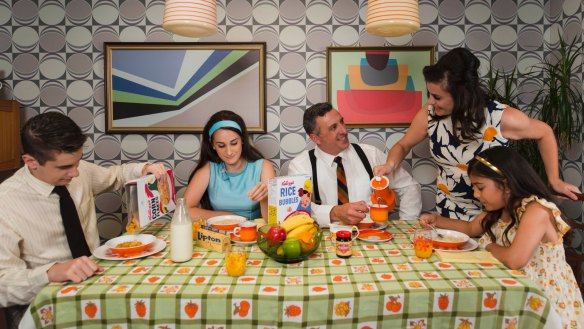
Over a period of nearly two months, they lived on camera, in another time. Production company Warner Bros. International Television Productions gutted their comfortable, open-plan, four-bedroom house and painstakingly refitted it as a 1950s home, then a 1960s home, then 1970s, then '80s and so forth. They lived in each decade for a week, eating only the food that was available at the time, cooking with the appliances of the era, wearing the clothes and conforming to the gender roles as well.
It was a remarkable thing to watch, which – as host of the show that would become Back In Time For Dinner – I had the opportunity to do at close quarters.
For the family, the excitement of walking into their home to find its open spaces partitioned off into the fussy, cramped dining room, sitting room and narrow, stuffy kitchen of the '50s quickly gave way to the realities of mid-century life.
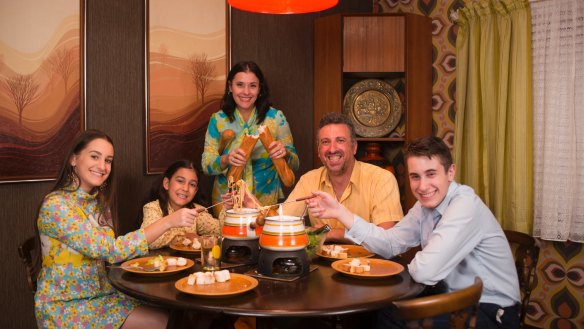
No fridge. No butter (still rationed, in a nation still recovering from the privations of World War II). No telephone. No television. And offal for dinner.
Carol had it the worst. In 2018 she is an executive coach, whose husband does much of the cooking. But in 1950, she was a full-time housewife, with no car, no fridge, no vacuum cleaner, an old-style copper to do the laundry in, and the unenviable task of persuading three post-millennial kids to eat tripe in white sauce.
This was an era in which her husband was not allowed in the kitchen, and women who worked were obliged to give up their jobs when they married.
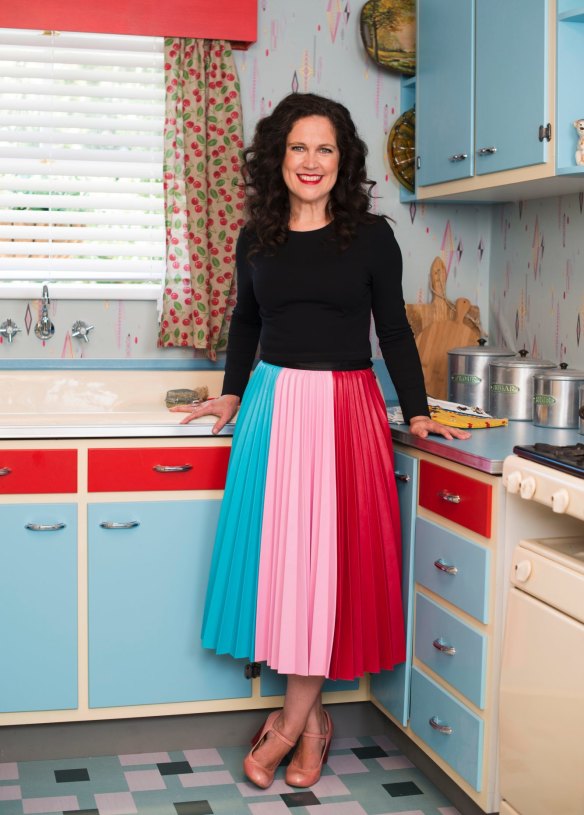
There is so much to be said about how things have changed since those times, but for me the most fascinating pattern to emerge was how deeply food – and the preparation of food – is woven into the cloth of our culture.
When you don't have a fridge, you have to shop every day. You don't keep leftovers, or harbour convenient snacks. The circumstances dictate a life of thrift, with one householder working full-time to earn wages and another working full-time to keep house.
When freezers arrived, convenience food blossomed in their wake. Suddenly, women had sufficient hours freed up in the day to consider leaving the house for the paid workforce. The vacuum cleaner, the washing machine, and the dishwasher all did their bit; the emancipation of women is – prosaically – as much about consumer electronics as it is about the arc of the moral universe bending towards justice.
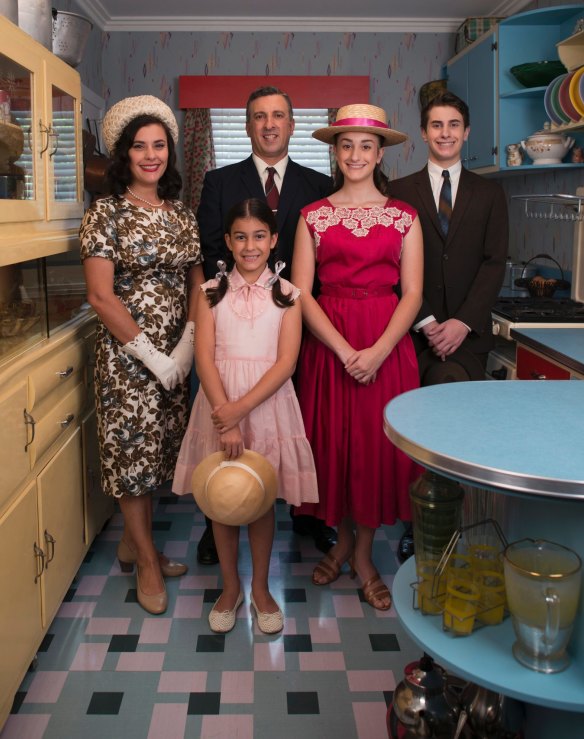
Making this series involved myriad tiny stabs of recognition; board games and china I remember from my granny's house, long-forgotten devices like the electric can-opener, the horrid reminder that parachute tracksuits really were once a thing.
I suspect that every viewer will – depending on their age – have a different point of connection to the series. For me, walking into the 1970s house was the most unearthly moment because it was a return to my own childhood. It was also a shocking reminder of the things that are gone forever. I can remember very clearly, for example, what it was like to have one single phone line, accessible only by a rotary dial phone that was moored to the wall by a cord. Somehow, I have assumed on some level that this corporate knowledge is inherited umbilically by my children.
But to see Sienna greet the rotary dial phone with a stare of utter puzzlement was a brutal confirmation that my childhood is a long time ago; a time capsule familiar only to others who lived in the same time.
Other, larger patterns became clear as I watched the family (they're unbelievably good, by the way; always enthusiastic and observant, and endlessly tolerant of the terrible things we made them eat, do and wear) time-travel in their home Tardis from 1950 through to 2010.
One is that the food culture of plenty is slowly choking us. In the 1950s, scarcity was a fact of life, portions were smaller and there were no snacks in the pantry for perusal by the bored or peckish.
But now, 24-hour supermarkets offer aisle after aisle devoted to recreational eating; snack-food whose primary purpose is effectively entertainment. While the significance of food has always extended beyond simple nourishment, this food is not about eating together. This food is about eating alone. That is a terribly sad thing.
The arrival of new foods along with immigrants to this country is a wonderful thing to see, especially when you're living a decade every week. In the 1950s, you had to go to the pharmacy to buy olive oil, but within decades Italian food was so mainstream that we were violating its honour with terrible convenient adaptations like frozen pizza and jarred pasta sauces. "If I eat that, I'll have to go to church and confess my sins!" protests Peter, whose eight-hour Bolognese sauce is the toast of his family.
The sheer joy with which the Ferrones fall upon their bowls of pho once they reach the 1990s is a demonstration of how broad our multicultural palates are.
But there is a nagging sadness behind all this sharing. Why is it that modern Australia has adopted so many cuisines imported by the migrants of the last 230 years, but remained so stubbornly resistant to the original cuisine of this continent?
Why is basil a staple, while lemon myrtle is still thought exotic?
Why – especially given our knowledge of how costly in environmental terms the raising of cattle and sheep is on the country in which we live – does kangaroo not figure more prominently on our menus?
As the pioneering indigenous chef Mark Olive told us wryly, "Skippy's got a lot to answer for."
RECIPES FROM THE AGES
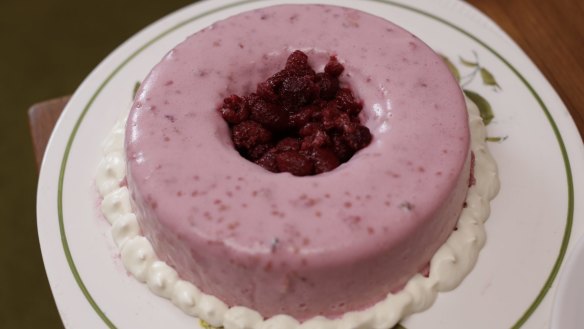
Tupperware party raspberry bavarois from the 1960s
INGREDIENTS
340g frozen raspberries, thawed
710ml raspberry juice and boiling water
2 x 85g raspberry flavoured jelly packets
235ml evaporated milk
METHOD
1. Mash half the raspberries until smooth. Make the 2 jellies according to packet instructions but with 710ml of raspberry juice or water. Stand for 30 minutes at room temperature.
2. Meanwhile, whisk evaporated milk to stiff peaks. Reserve ½ a cup to pipe decorations and chill until required.
3. Fold mashed raspberries and milk through the jelly. Pour mixture into a ring mould and chill for 4 hours or until set.
4. Turn bavarois out onto a serving plate and fill the centre with reserved whole raspberries. Use a small 4 point star nozzle fitted into a piping bag to pipe whipped "cream" around the base.
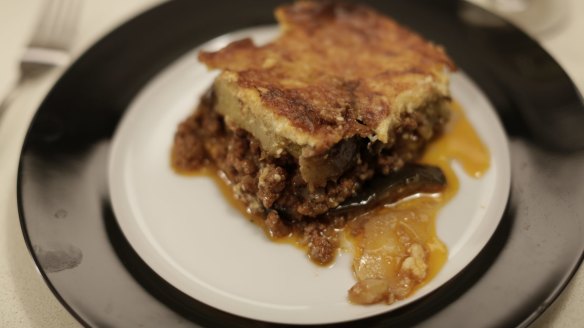
Eleni's lamb moussaka from the 1980s
This recipe from chef Peter Conistis' mum appears on the show representing the 1980s era, a time when the medical profession was studying the enormous benefits of the Mediterranean diet on the Greeks living in Australia compared to "mainstream" Australia. Conistis, known as the pioneer of modern Greek cooking, visits the Ferrones to cook the classic Greek dish moussaka.
INGREDIENTS
600g desiree potatoes
3 large eggplants
250ml olive oil
Salt and black pepper
100g kefalotyri (or pecorino) cheese, grated
Braised lamb
60ml extra virgin olive oil
1kg lamb mince
2 brown onions, finely diced
2 celery stalks, finely diced
3 garlic cloves, minced
½ tsp ground cinnamon
½ tsp ground allspice
1 tsp dried oregano
½ tsp dried mint
2 tsp salt
1 tsp black pepper
1 tsp castor sugar
250ml red wine
500ml tomato passata
500ml chicken stock
Bechamel sauce
100g butter, chopped
100g plain flour
750ml milk
100g kefalograviera and feta, both grated
2 egg yolks and 1 egg, whisked together
½ tsp grated nutmeg
½ tsp salt
METHOD
1. For the braised lamb, heat olive oil in a large saucepan over medium heat. Brown the mince, remove from pan and reserve.
2. Leave the oil in pan and saute the onion, celery and garlic until translucent. Return lamb to pan with the herbs and spices. Cook for 1 minute then add wine. Cook until wine is reduced by half.
3. Add tomato passata and stock and simmer over low heat for 1 hour. Set aside and allow to cool.
4. Meanwhile, preheat oven to 180C. Peel and slice potatoes 1cm thick. Layer into a 20cm x 30cm baking dish. Brush with olive oil and season with salt and pepper. Bake for 20 minutes.
5. Slice eggplants 1cm thick. In a large frypan, heat olive oil and fry eggplant slices until golden. Drain well and set aside.
6. For the bechamel sauce, melt butter in a pan over medium heat. Add flour and stir for 2 minutes until mixture turns a light golden colour. Add milk, whisking continuously for 5 minutes until thick. Remove from heat, add the kefalograviera and feta, and stir until melted. Whisk in egg, yolks, nutmeg and salt.
7. Spread half the fried eggplant over the potato slices the spread the lamb filling. Cover with the remaining eggplant slices. Top with the bechamel then sprinkle over the kefalotyri cheese and bake for 30-40 minutes or until the top is golden brown.
Back in Time for Dinner is a seven-part factual series that airs from Tuesday, May 29 at 8.30pm on ABC and ABC iview.